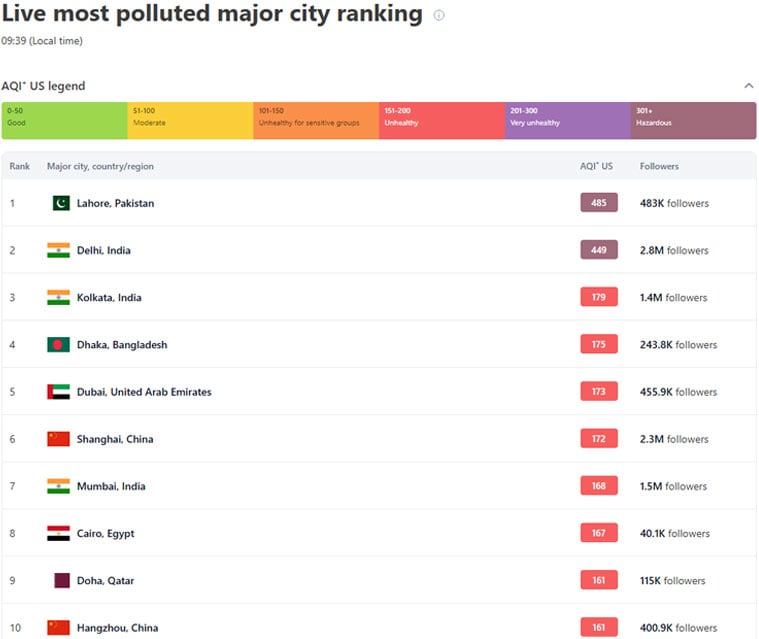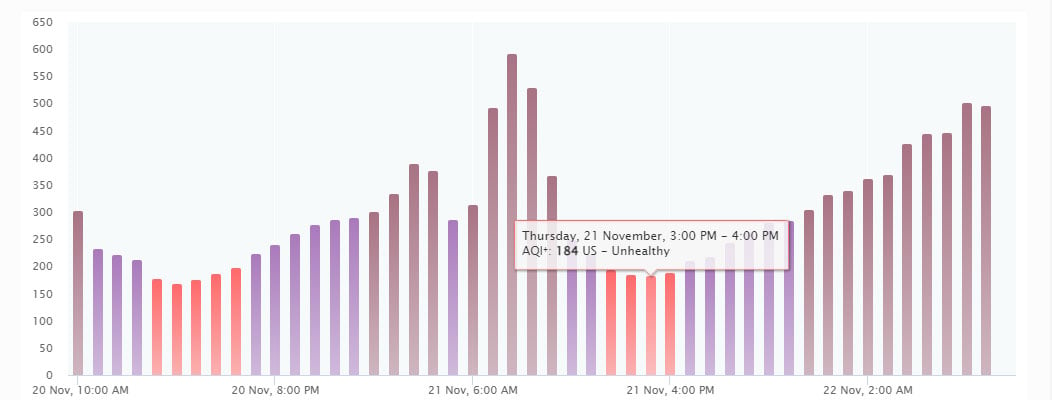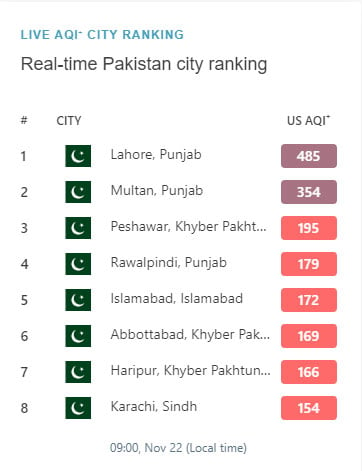No respite for Lahore residents as smog keeps Punjab blighted

- AQI in Lahore spikes to 502 early morning before dipping to 485.
- India’s New Delhi slips to second spot on global pollution chart.
- Punjab’s Multan ranks as second most polluted city in Pakistan.
The relief from suffocating smog was short-lived as Lahore witnessed a rise in pollution levels again, a day after the Punjab government eased the restrictions in the wake of improvement in the provincial capital’s air quality.
Lahore ranked the most polluted city in the world in terms of air quality on Friday as its air quality index (AQI) spiked to 502 early morning after dipping to an “unhealthy” 184 a day ago on the Swiss group IQAir’s list.

As of 9:30pm, the AQI was recorded at 485 but still above the 300 mark considered, which is considered hazardous, while the level of PM2.5 particles was also more than 63.6 times higher than the level deemed acceptable by the World Health Organisation.
Meanwhile, India’s New Delhi slipped to the second spot in the rankings of cities with worst air quality, after sitting atop the global pollution charts.

In Pakistan, the second most polluted city was Multan, with a “hazardous” 354 AQI.
The Punjab government announced on Thursday the resumption of outdoor activities as the air quality and smog crisis improve in Lahore and other cities of the province.

Punjab, home to more than half of the country’s 240 million people, remains blighted by the toxic smog-laden air travelling from neighbouring India due to dust, emissions, and smoke from illegal stubble burning on fields.
The dense smog that hit hazardous levels earlier this month was described by Senior Minister for Environmental Protection Marriyum Aurangzeb as a “national disaster.”
However, on Thursday, the provincial government announced the resumption of outdoor activities as the air quality and smog crisis saw some improvement in Lahore and other cities of the province.
The thickening smog had prompted the authorities to take drastic actions, including the closure of schools and a complete ban on people’s entry into park, zoos, playgrounds and all other public places besides open-air cooking at restaurants and construction sites.
Every Lahore winter, a mix of low-grade fuel emissions from factories and vehicles, exacerbated by seasonal crop burn-off by farmers, blanket the city, trapped by cooler temperatures and slow-moving winds.
As per a WHO warning, breathing toxic air has catastrophic health consequences including strokes, heart disease, lung cancer and respiratory diseases due to prolonged exposure.


